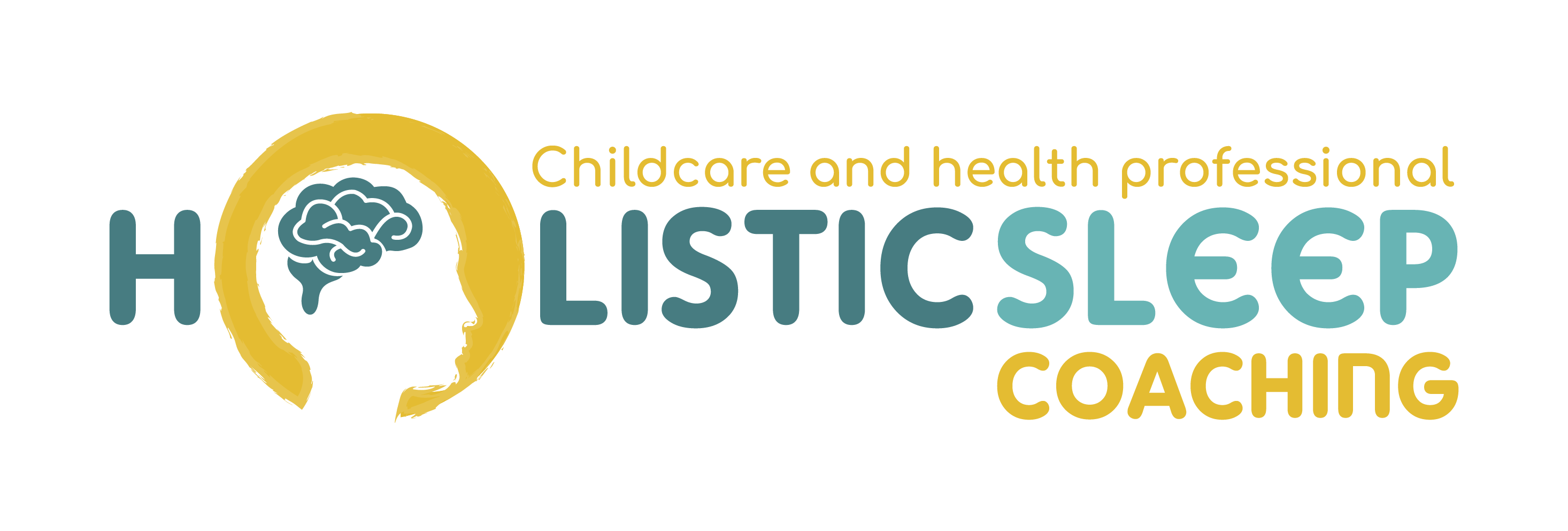Have you ever felt like your passion for sleep could be more than just a hobby? Today, I’ll walk you through the 5 essential steps to transform your passion for sleep into a successful sleep consulting business. By the end, you’ll have a clear action plan to achieve consistent clients and a steady income.
If you prefer to watch the video version click below.
Today We Are Going to Cover:
- How to gain the knowledge needed to address parents’ underlying problems effectively.
- How to embrace a holistic approach to transform family sleep.
- How to discover your niche and attract your ideal clients.
- How to develop a consistent marketing strategy.
- How to achieve success by setting clear goals and tracking progress.
Step 1: Gain the Knowledge Needed to Address Parents’ Underlying Problems Effectively
To truly support a family, you need a deep understanding of sleep biology and a holistic, evidence-based approach. This knowledge is essential for effectively diagnosing and addressing underlying sleep issues.
Understanding sleep biology is important because it helps you:
- Distinguish Between Normal and Concerning Sleep Patterns: Implement effective changes to transform a family’s sleep situation with the right scientific insights.
- Equip Parents: Provide valuable tools as their child grows, fostering long-term sleep health.
Even minor adjustments can significantly influence a family’s sleep dynamics. Knowing when and how to shift sleep timings can make a big difference.
Often, people have fragmented knowledge about sleep biology. They might understand parts of sleep cycles or sleep hygiene but struggle to connect these pieces comprehensively. That’s where a holistic, science-grounded approach comes in. Integrating all components of sleep biology, including developmentally normal sleep expectations and underlying factors like stress regulation, allows you to create precise and empathetic sleep support plans.
Step 2: Embrace a Holistic Approach to Transform Family Sleep
Next up, let’s dive into a huge misconception about sleep coaching—it’s not just about clever sleep strategies. If you focus only on sleep, you’re missing out on the bigger picture that can massively impact a family’s well-being. And by doing that, you’re overlooking a golden opportunity to empower parents in a truly profound way.
Think about it: real sleep support isn’t just about helping a child fall asleep. It’s about understanding how every aspect of childhood and parenting is interconnected. For instance, when you’re working with infants, you need to consider elements like feeding, behavior, a child’s temperament and development, and common issues such as reflux, allergies, and colic. These factors are deeply intertwined with sleep. When you can address these comprehensively, you’re not just improving sleep—you’re transforming the entire family’s experience.
When you adopt a holistic approach to supporting families with sleep, you’re not just helping with sleep; you’re supporting the overall well-being of the families you work with. This means recognizing red flags, knowing when to refer a family for specialized assistance, and navigating the complexities of people’s lives—like illnesses, trauma, and disabilities—with compassion and cultural sensitivity. This holistic approach is what sets truly exceptional sleep consultants apart. It’s the difference between being good and absolutely excelling in your role. By deeply understanding and addressing all these interconnected factors, you can make a profound impact on the families you support, helping them achieve lasting improvements.
Step 3: Discover Your Niche and Attract Your Ideal Clients
Now that you know the skills needed to deeply support families and make an impact, it’s time to focus on attracting clients. Visibility is key, and that means being recognized for a specific expertise. Instead of trying to address all aspects of sleep for all parents, consider honing in on a particular niche that truly excites you and aligns with your interests.
I know this might feel counterintuitive—you might think that serving a smaller group of parents will mean fewer clients and less income. But trust me, the opposite is true. When I started my training agency, Babyem, we offered everything: au pair training, corporate training, antenatal classes, mental health training, and maternity training. My business was like an à la carte menu at a restaurant—no one knew what we stood for, who we served, or how we could help.
But once we niched down and focused solely on attracting and serving postnatal specialists with a gentle, holistic, and evidence-based approach, everything changed. Suddenly, people could see clearly what we did and how we did it. We made it easier for our ideal clients to choose us over the competition. And that’s when we truly started to grow.

Take, for example, one of our graduates from the holistic sleep coaching program, Isadora. She specializes in safely co-sleeping. This topic is close to her heart and something she knows intimately from her own experiences. By sharing her personal journey and expertise with her followers, she creates a strong connection. Her audience knows exactly what to expect from her consultations, courses, and guides. Even social media algorithms recognize where to position her content—right in front of parents passionate about co-sleeping.
Similarly, we have graduates who focus on supporting families with high-needs children, those who assist families with multiples, and those who work exclusively with toddlers.
The goal is to become so well-known in your niche that when someone mentions your name, there’s no question about who you serve and how you help them.
So, how do you figure out your niche? It’s about connecting with what you know and love. Here are some key questions to ask yourself to help identify your specialty:
- What is a problem or obstacle you’ve personally overcome?
- What is your career expertise?
- What’s a skill you’ve mastered, personally or professionally?
- What do people consistently ask you for help with?
- What excites you the most?
Remember, Rome wasn’t built in a day. At the beginning, just focus on getting started, gaining clients, and practicing with various families. Niching down initially might just mean focusing on letting your audience know you are gentle and responsive. But once you reach a point where you feel confident, niching down will help you truly thrive.
Step 4: Develop a Consistent Marketing Strategy
Alright, now let’s talk about marketing. Many sleep consultants rely heavily on just posting on their social media channels and waiting for clients to come to them. While inbound marketing is essential, it’s not enough on its own. Because if you just wait for people to come to you, then you don’t really have any control over your business. You need to get out there and find your people—not just any people—your ideal clients. And the process of doing that is what I call outbound marketing. But how do you even find out where your ideal clients are? Well, niching down will give you that clarity because you actually have someone in your mind that you want to talk to.
Next, we need to figure out where they hang out—both online and offline.
Online: Head to forums and join Facebook Groups where your ideal client will be. Join these forums and groups not to sell, but to add value. Answer questions, provide tips, and share your expertise freely. The more helpful you are, the more you stand out, and the more likely people are to remember your name when they need sleep consultancy services.
Offline: Think about where your ideal clients might be. For example, if you’re targeting corporate mums, reach out to companies and offer to speak at their keeping-in-touch days. Attend networking events or host workshops for women returning to work.
Leverage Professional Networks: Look at who else is serving a similar audience and reach out to these professionals. Maybe it’s lactation consultants, pediatric osteopaths, doulas, postnatal groups, or postnatal fitness specialists. If you enjoy working with parents of multiples, reach out to twin groups or twin charities. Offer to guest blog on their site, do live sessions together, and see how you can best serve their audience. This not only puts you in front of their audience but also positions you as an authority in your field.
Integrating these strategies means that you’re not just passively hoping for clients to find you; you’re actively putting your services where they can see them. It’s about making sure your voice is heard above the noise and that your valuable services are showcased across multiple platforms and touchpoints.
When it comes to your content, you really want to vary your content so that when your ideal clients land on your page you really connect with them. So you want to create content that shares tips and strategies—and that’s going to showcase your knowledge and establish you as an authority. But here’s the thing: if you only share tips and strategies, people might follow you, but they won’t feel that deep connection needed to drive action, to compel them to buy from you specifically. And that’s where connection content comes into play.
In this type of content, you want to reveal why you do what you do. Speak to the shared beliefs and experiences that you and your ideal client have. This is where your stories come in.
Remember those reflective questions we explored in step 2, guiding you to uncover your story, strengths, and passions? That’s precisely where connection content gains momentum. It’s about embracing and sharing those experiences, skills, and passions.
Now you also want to help your ideal client overcome thoughts and beliefs that don’t serve them. And by doing this, you’re greatly helping them and positioning yourself as an authority figure. People value those who help them think differently.
Another crucial facet of content is showing your results. It’s all about showcasing those wins and the transformations that speak volumes about your expertise and the value you bring. There are many ways to do this. For us, that means going live with our graduates and sharing their journey from before they joined our program, to where they are now – making an incredible impact on the lives of families and running businesses they love.
We also share success stories on our Instagram channel—like our Wednesday wins. You could do the same with your clients. And here’s the thing: people aren’t just paying for information when they sign up for your service; they’re investing in the specific transformation you help them achieve. So you want to show your ideal client how you help people achieve those transformations.
Finally, remind people about your services. People are busy, and occasionally reminding them is like a friendly tap on the shoulder, saying, “Hey, I’ve got your back whenever you need help.”
Here’s the reality check—only around 20% of the folks who come across your content might actually consider buying. That’s the reality. So, make sure those 20% know exactly how you can help them.
Step 5: Achieve Success by Setting Clear Goals and Tracking Progress
When it comes to setting goals and growing your sleep coaching business, I want to show you a minimalist approach that’s actually achievable and makes sense. Now the first step is to break down your goals for the year – think of one, maybe two key things you want to achieve. Maybe that’s getting a certain number of clients that year.
Then you from there you want to set clear achievable goals – so start by working backward from your income goal. If you aim to make £25,000 in your first year, break that down. How many clients do you need to hit that target? What packages will you offer? Often, you’ll find you don’t need as many clients as you think to reach your goal.
Next, break it down quarterly. What specific activities will you focus on to achieve your goals?
Decide what you’ll double down on. For example, in the first quarter, you might focus on contacting 20 potential partners weekly, guest speaking for potential partners three times a month, and creating monthly content.
From there, plan your week. If you’re like me, juggling kids and other responsibilities, be realistic about what you can accomplish each day. Focus on the most critical tasks that will move your business forward. I never aim to do more than three key things a day. Because you just feel defeated when you have a bazillion things on a list (most of which aren’t actually essential to growing your business – and by 3 pm you have done none of those things).
OK, Then you want to track those activities because we need to know what’s actually working and what needs fine-tuning or dropping—so we can optimize our time.
As Edwards Deming once said,
“Without data, you’re just another person with an opinion.”
This quote really resonates with me and underscores the importance of tracking our efforts to make informed decisions.
So, if you have set yourself the goal of networking and doing outreach (which is a good idea especially when starting out). You want to measure what networking and outreach efforts are paying off. Which activities yield the best results? And you might find you need to increase your outreach from 20 to 30 people per week to hit your targets. And you’ll only know this by looking at your data.

When it comes to your Social Media – you want to track your insights there. So that’s not just about how many likes you got on your posts. You want to dig deeper. Look at which posts truly engage your audience. What type of content resonates most? And then use these insights to refine your strategy and drive better engagement and conversions.
Now, let’s talk about managing your finances. It’s crucial to understand your profit margins and expenses. Track where your money goes each month. Are some activities more cost-effective than others? So let’s say you are running group workshops, face-to-face one-to-ones, and online one-to-ones, if you are tracking time spent on activities and the costs, and profit associated with those activities, you’ll soon be able to see what’s effective – what’s going to help you achieve your big goal. And when it comes to the tracking side of things – you can use a simple spreadsheet or online accounting tools like Xero or FreeAgent to keep everything organized.
Another important aspect is knowing your financial runway. How long can you keep operating at your current spending levels without new income? This is key to understanding the sustainability of your business. Tracking your numbers might seem daunting at first, but trust me, it’s empowering. With this information, you can make informed decisions that will help you grow your business and achieve your goals.
Conclusion
To recap, by following these steps—gaining the knowledge needed to address parents’ underlying problems effectively, embracing a holistic approach, discovering your niche, developing a consistent marketing strategy, and setting clear goals—you can turn your passion for supporting families with sleep into a successful, impactful business with a consistent income.
Having supported over 500 graduates in our program, we know how crucial it is to have these steps working for you. If you want support on this journey, the first step is to book a call with us to see if we’re a good fit for you. Just click the link below this blog article.

